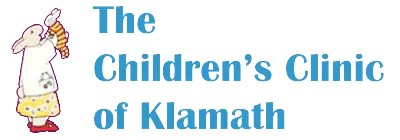Arthritis is swelling and pain of the joints. When this problem is chronic, the most common form is juvenile idiopathic arthritis (JIA).
Read MoreChronic_health_needs

-
Managing Chronic Health Needs in Child Care and Schools—Juvenile Idiopathic Arthritis (JIA)
-
Managing Chronic Health Needs in Child Care and Schools—Kidney and Other Urinary Tract Problems
Nephrotic syndrome can occur at any age but is most common between the ages of 18 months and 8 years. Boys are affected more often than girls. A child may come to the child care or school with the diagnosis or may develop it while enrolled.
Read More -
Managing Chronic Health Needs in Child Care and Schools—Marfan Syndrome
Marfan syndrome is an inherited condition. It affects the tissues that connect parts of the body.
Read More -
Managing Chronic Health Needs in Child Care and Schools—Mitochondrial Disorders
Mitochondrial disorders are a diverse group of diseases caused by damage to small structures found in human cells that are essential in converting food to energy. The result is decreased energy production and associated symptoms.
Read More -
Managing Chronic Health Needs in Child Care and Schools—Muscular Dystrophy
Muscular dystrophy is a group of genetic diseases that cause muscle wasting and weakness. The most common type is Duchenne muscular dystrophy, which is progressive and occurs only in boys.
Read More -
Managing Chronic Health Needs in Child Care and Schools—Neonatal Abstinence Syndrome (NAS)
Neonatal abstinence syndrome (NAS) is a drug withdrawal syndrome that some infants experience after birth and that generally follows exposure to an opioid.
Read More -
Managing Chronic Health Needs in Child Care and Schools—Neurofibromatosis (NF) and Tuberous Sclerosis Complex (TSC)
There are many types of neurocutaneous syndromes (syndromes that include skin findings). The most common is neurofibromatosis (NF). There are 7 types of NF. Although they are all different, they all have skin and neurologic findings. Neurofibromatosis type 1 (NF1) is the most common type, and, while
Read More -
Managing Chronic Health Needs in Child Care and Schools—Prader-Willi Syndrome (PWS)
Prader-Willi syndrome (PWS) is a genetic condition that affects the brain and causes newborns and young infants to be weak and slow to gain weight but shifts to causing excessive hunger and weight gain in toddlers. It affects boys and girls equally.
Read More -
Managing Chronic Health Needs in Child Care and Schools—Preterm Newborns (Preemies): An Overview
One in 10 babies (9.6%) was born prematurely in the United States in 2016.
Read More -
Managing Chronic Health Needs in Child Care and Schools—Seizures, Febrile
Febrile seizures are described as generalized (whole brain and body involved), tonic-clonic (shaking) movements of a child’s body in response to a high fever. These seizures represent abnormal brain electrical activity triggered by fever.
Read More
- adhd
- adolescents
- autism spectrum disorder
- behavioral and psychosocial issues
- chronic health needs
- common illnesses and conditions
- growth and development
- immunizations
- infectious diseases
- newborns infants and toddlers
- nutrition and healthy living
- pediatric care
- safety and prevention
- school-aged children
- sexual health and sexuality
- sports and fitness
- substance abuse
- well-child visits
- Schmitt Pediatric Care Advice
- COVID-19
- breastfeeding
- Newborn or Infant Problems
- Genital or Urinary Symptoms
- Chest or Breathing Symptoms
- Head or Brain Symptoms
- Ear Symptoms
- Nose Symptoms
- Eye Symptoms
- Behavior Problems
- Skin - Widespread Symptoms
- Neck or Back Symptoms
- Skin - Localized Symptoms
- Mouth / Teeth / Throat Symptoms
- Fever Symptoms
- Abdomen or Digestive Symptoms
- Arm or Leg Symptoms
- Behavior Symptoms
- Sleep Problems
The Children's Clinic of Klamath
2580 Daggett Ave.,
Klamath Falls, OR 97601
